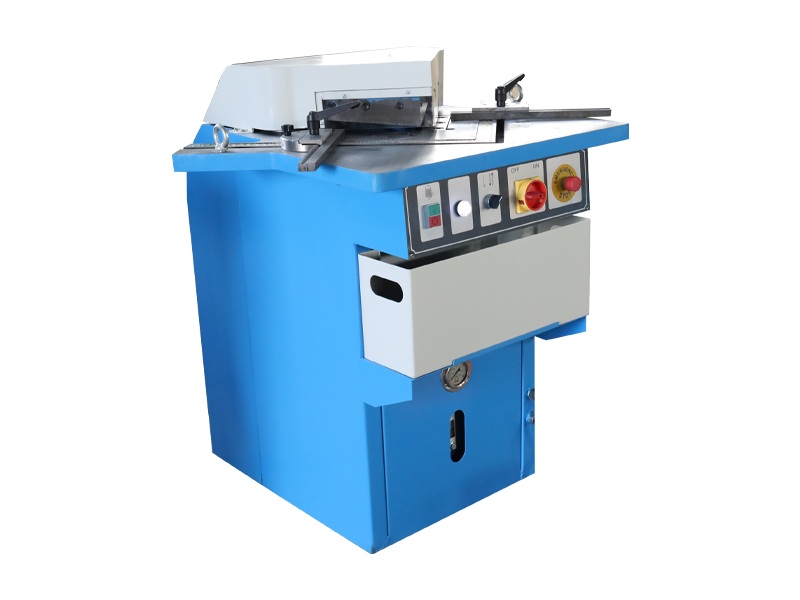In sheet metal fabrication—where component quality is governed by standards like ISO 13715 (burr classification) and DIN 4063 (edge rounding tolerances)—selecting the right deburring machine is a critical decision that directly impacts product safety, performance, and production efficiency. Burrs (formed during laser cutting, stamping, or milling) and uneven edges can compromise assembly fit, cause premature wear in moving parts, or pose laceration risks to operators. This guide outlines a technical, application-driven framework for choosing a deburring machine, emphasizing alignment with material properties, production demands, and part geometry.
1. First: Understand the Industrial Context of Deburring
Before selecting a machine, clarify the non-negotiable requirements of your application:
- Burr type & size: ISO 13715 categorizes burrs by height (≤0.1mm = Class 1; 0.1–0.5mm = Class 2; >0.5mm = Class 3). For example, aerospace components (AS9100 compliant) require Class 1 burr removal, while general sheet metal brackets may accept Class 2.
- Edge rounding needs: Critical for fatigue resistance—e.g., automotive chassis parts need 0.2–0.5mm radii, while medical device components (ISO 13485) demand 0.1–0.2mm radii.
- Surface finish target: Measured by Ra (roughness average). Laser-cut stainless steel typically has Ra 6.3–12.5 μm post-processing; deburring may need to reduce this to Ra 0.8–3.2 μm for cosmetic or sealing applications.
Deburring machines are not one-size-fits-all—each type is engineered for specific part volumes, geometries, and materials. Below is a technically precise breakdown:
| Machine Category | Core Technology | Key Technical Specs | Ideal Applications | Cost Range (USD) |
|--------------------------------|---------------------------------------------------------------------------------|-------------------------------------------------------------------------------------|-----------------------------------------------------------------------------------|------------------------|
| Handheld Manual Deburrers | Carbide-tipped tools, diamond files, or mini-rotary brushes (10,000–30,000 RPM). | Tool bit size: 1–6mm; Ra improvement: 6.3→3.2 μm; max burr height: 0.2mm. | Low-volume (≤50 parts/day), intricate parts (e.g., laser-cut sheet metal with undercuts) or on-site repairs. | $50–$500 |
| Rotary Deburring Machines | Motor-driven abrasive brushes (nylon, steel, or ceramic) or sanding discs. | Brush speed: 500–3,000 RPM; contact pressure: 0.5–2 kgf; part size: up to 1m × 2m. | Medium-volume (50–500 parts/day) flat/simple-profile parts (e.g., electrical enclosures, HVAC duct flanges). | $2,000–$15,000 |
| Vibratory Deburring Systems| Vibrating tubs with abrasive media (ceramic beads, plastic pellets, or walnut shells). | Vibration frequency: 1,200–3,600 Hz; cycle time: 15–120 mins; batch size: 1–50 kg. | Small, high-volume (500–2,000 parts/day) components (e.g., sheet metal fasteners, washers) needing uniform edge rounding. | $3,000–$25,000 |
| Through-Feed Stationary Deburrers | Conveyor-driven with top/bottom abrasive belts (P80–P320 grit) or deburring wheels. | Feed rate: 1–5 m/min; belt width: 300–1,200mm; edge rounding: 0.1–1mm (adjustable). | High-volume (≥1,000 parts/day) flat sheet metal (e.g., laser-cut panels for appliances, automotive body components). | $15,000–$80,000 |
| Robotic Stationary Deburrers| 6-axis robots with force-controlled tools (carbide mills, abrasive discs) + CNC programming. | Repeatability: ±0.02mm; cycle time: 10–60 sec/part; part complexity: 3D geometries (e.g., welded sheet metal assemblies). | High-mix, high-volume (500–1,500 parts/day) precision components (e.g., aerospace brackets, electric vehicle battery enclosures). | $50,000–$200,000 |
| Laser Deburring Machines | Fiber lasers (1,064 nm wavelength) for non-contact burr removal. | Laser power: 50–200 W; spot size: 0.1–0.5mm; max burr height: 0.1mm; Ra: 1.6–3.2 μm. | Ultra-precision applications (e.g., medical device components, micro-sheet metal parts) where mechanical contact risks deformation. | $80,000–$300,000 |
3. Core Selection Factors: Technical Alignment with Your Needs
Choosing a machine requires balancing four interdependent factors—material, production volume, part geometry, and facility constraints:
3.1 Material Compatibility
Different metals demand specialized deburring tools to avoid damage or inconsistent results:
- Low-carbon steel (Q235/1018): Soft (HB 150–180) → Use nylon brushes or P120–P180 abrasive belts; avoid aggressive ceramic media (risk of over-removal).
- Stainless steel (304/316): Harder (HB 180–220) + prone to work hardening → Use ceramic brushes or fiber lasers; wet deburring (with coolant) prevents heat-induced discoloration.
- Aluminum (5052/6061): Soft (HB 60–110) + easily scratched → Use plastic abrasive media (vibratory systems) or low-pressure (0.5 kgf) rotary brushes; avoid high-speed steel tools.
- Titanium (Ti-6Al-4V): High-strength (HB 300–350) → Require diamond-tipped tools or laser deburring; through-feed machines need hardened steel rollers to avoid wear.
3.2 Production Volume & Throughput
Match machine speed to your daily output to avoid bottlenecks:
- Low volume (≤50 parts/day): Handheld tools or small vibratory tubs (no need for automation).
- Medium volume (50–500 parts/day): Rotary machines or compact through-feed systems (balance of speed and cost).
- High volume (≥1,000 parts/day): Through-feed stationary or robotic systems; integrate with MES (Manufacturing Execution Systems) for 24/7 operation.
*Example*: A laser cutting shop producing 1,200 sheet metal panels/day needs a through-feed deburrer with a 3 m/min feed rate (processes ~1 panel every 10 seconds) to keep up with laser output.
3.3 Part Geometry Complexity
- Flat/simple parts (e.g., square brackets): Through-feed or rotary machines (efficient, low-cost).
- 3D/complex parts (e.g., welded sheet metal enclosures with internal cavities): 6-axis robotic deburrers (flexible tool access); avoid through-feed systems (cannot reach undercuts).
- Small parts (≤50mm, e.g., fasteners): Vibratory systems (batch processing); handheld tools are too slow.
3.4 Facility Constraints: Space & Environment
- Space: Through-feed machines need 3–5m of linear floor space (plus conveyor extensions); robotic cells require 4–8m² (including safety guards). Handheld tools or small vibratory tubs fit on benchtops (0.5–1m²).
- Environment:
- Wet deburring (for stainless steel/titanium) needs plumbing + wastewater treatment (to meet local discharge standards: COD <100 mg/L, pH 6–9).
- Dry systems (laser/rotary) need HEPA 13 filtration (captures 99.95% of ≥0.3μm dust) to comply with OSHA respirable particulate limits (5 mg/m³ for metal dust).
- Noise: Through-feed/robotic machines generate 75–85 dB → Require sound dampening (if located near operator workstations); handheld tools are quieter (60–70 dB).
3.5 Budget & Total Cost of Ownership (TCO)
Upfront cost is just one component—calculate TCO over 5 years to avoid hidden expenses:
- Handheld tools: Low upfront cost ($50–$500) but high labor cost ($25/hour × 2 hours/day = $12,500/year for 50 parts/day).
- Robotic systems: High upfront cost ($50k–$200k) but low labor cost (1 operator manages 2–3 robots) + 8–12 year lifespan (lower replacement frequency).
- Consumables: Abrasive belts ($50–$200/roll, last 500–1,000 parts) for rotary machines; laser diodes ($5k–$15k, 10,000+ hours) for laser systems.
4. Critical Maintenance Practices to Extend Machine Life
Even the right machine will underperform without proper upkeep. Follow these technical maintenance guidelines:
- Handheld tools: Clean carbide bits after use (with isopropyl alcohol); replace bits when cutting edges show wear (≥0.1mm dulling).
- Rotary/through-feed machines: Inspect abrasive belts for fraying weekly; replace brushes when bristle length decreases by 30% (maintains consistent contact pressure).
- Vibratory systems: Sift media monthly to remove fines (prevents uneven deburring); replace 10% of media every 6 months (maintains abrasiveness).
- Robotic/laser machines: Calibrate robot positioning (±0.02mm) quarterly; clean laser lenses weekly (with lens wipes) to avoid power loss (≥5% power drop = lens replacement).


 English
English  中文
中文  Arabic
Arabic  Russian
Russian  Spanish
Spanish  Portuguese
Portuguese  French
French  German
German  Hindi
Hindi  Thai
Thai  Vietnamese
Vietnamese  Khmer
Khmer  Italian
Italian  Turkish
Turkish  Korean
Korean  Belarusian
Belarusian 

